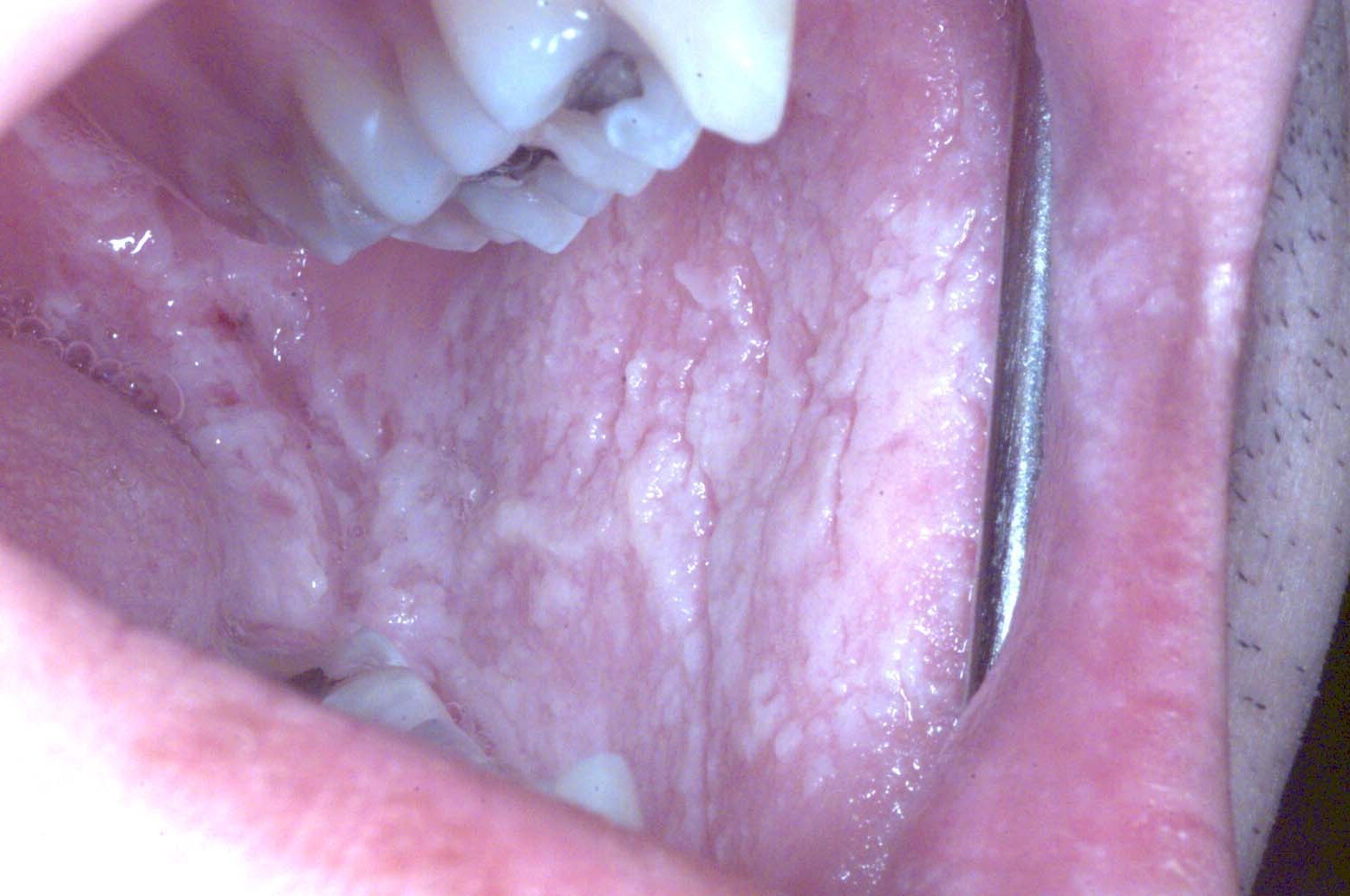
White Sponge Nevus is a rare genetic condition that affects the mucous membranes, particularly in the mouth. Ever noticed white, spongy patches inside someone's cheeks or on their gums? That's a telltale sign of this condition. Caused by mutations in specific genes, it often runs in families. While it might look alarming, it's usually harmless and doesn't cause pain. However, it can sometimes be mistaken for other oral issues, making proper diagnosis crucial. Want to know more about this intriguing condition? Here are 53 facts that will give you a deeper understanding of White Sponge Nevus, its causes, symptoms, and treatments.
Key Takeaways:
- White Sponge Nevus is a rare genetic condition causing white patches in the mouth. It's usually painless and doesn't affect overall health, but regular dental check-ups and good oral hygiene are important for managing the symptoms.
- While there's no cure for White Sponge Nevus, maintaining a balanced diet, staying hydrated, and avoiding irritants like tobacco and alcohol can help improve the quality of life for those affected. Regular monitoring and support from healthcare professionals and family are crucial.
What is White Sponge Nevus?
White Sponge Nevus (WSN) is a rare genetic condition affecting the mucous membranes, particularly in the mouth. It often appears as white, thickened patches on the inside of the cheeks, gums, and sometimes other areas. Understanding this condition can help in managing it better.
- White Sponge Nevus is a genetic disorder.
- It primarily affects the mucous membranes.
- The condition is usually present from birth or early childhood.
- WSN is also known as Cannon's disease.
- It is named after the sponge-like appearance of the affected tissues.
- The condition is benign, meaning it is not cancerous.
- WSN is caused by mutations in the keratin genes KRT4 or KRT13.
- These genes are responsible for the structural integrity of epithelial cells.
- The condition is inherited in an autosomal dominant manner.
- This means only one copy of the mutated gene is needed to cause the disorder.
Symptoms of White Sponge Nevus
Recognizing the symptoms of WSN can help in early diagnosis and management. The symptoms are usually visible and can be identified by a healthcare professional.
- White, thickened patches in the mouth are the most common symptom.
- These patches can also appear on the tongue and inside the lips.
- The patches are usually painless.
- They may have a spongy or velvety texture.
- The condition can sometimes cause mild irritation.
- In rare cases, WSN can affect the esophagus, nose, or genital mucosa.
- The patches do not scrape off easily.
- They are often symmetrical, appearing on both sides of the mouth.
- The condition does not typically affect overall health.
- WSN does not lead to any serious complications.
Diagnosis of White Sponge Nevus
Diagnosing WSN involves a combination of clinical examination and genetic testing. Early diagnosis can help in managing the condition effectively.
- A dentist or doctor can often diagnose WSN based on appearance.
- A biopsy may be performed to confirm the diagnosis.
- The biopsy involves taking a small tissue sample for examination.
- Genetic testing can identify mutations in the KRT4 or KRT13 genes.
- Family history is also considered during diagnosis.
- WSN is often misdiagnosed as other oral conditions.
- Differential diagnosis is important to rule out other diseases.
- Conditions like leukoplakia or oral lichen planus may look similar.
- A thorough examination helps in accurate diagnosis.
- Early diagnosis can prevent unnecessary treatments.
Treatment and Management of White Sponge Nevus
While there is no cure for WSN, various treatments can help manage the symptoms. Proper management can improve the quality of life for those affected.
- There is no specific treatment for WSN.
- Good oral hygiene is essential in managing the condition.
- Regular dental check-ups are recommended.
- Avoiding irritants like tobacco and alcohol can help.
- Topical treatments may be used to reduce irritation.
- Antifungal medications are sometimes prescribed.
- These medications help if there is a secondary fungal infection.
- Laser therapy has been used in some cases.
- Surgical removal of the patches is rarely necessary.
- Psychological support may be beneficial for some patients.
Living with White Sponge Nevus
Living with WSN involves adapting to the condition and maintaining a healthy lifestyle. Support from healthcare professionals and family can make a significant difference.
- Educating oneself about the condition is important.
- Joining support groups can provide emotional support.
- Sharing experiences with others can be helpful.
- Regular monitoring of the condition is necessary.
- Maintaining a balanced diet supports overall health.
- Staying hydrated is important for oral health.
- Avoiding spicy and acidic foods can reduce irritation.
- Using a soft-bristled toothbrush can prevent trauma to the gums.
- Fluoride toothpaste is recommended for dental care.
- Regular visits to a healthcare professional are essential.
Research and Future Directions
Ongoing research aims to better understand WSN and develop new treatments. Advances in genetics and molecular biology hold promise for the future.
- Research is focused on understanding the genetic basis of WSN.
- New treatments are being explored in clinical trials.
- Advances in gene therapy may offer potential future treatments.
Final Thoughts on White Sponge Nevus
White Sponge Nevus, a rare genetic condition, affects the mucous membranes in the mouth, nose, and sometimes other areas. It's usually harmless but can cause discomfort or embarrassment due to its appearance. Understanding its genetic roots helps in managing the condition better. Regular dental check-ups and good oral hygiene are crucial for those affected. While there's no cure, treatments like topical antibiotics or antifungals can help manage symptoms. If you or someone you know has White Sponge Nevus, consulting with a healthcare professional for personalized advice is essential. Knowledge about this condition can empower individuals to handle it more effectively. Stay informed, stay proactive, and remember that support from healthcare providers and loved ones can make a significant difference.
Frequently Asked Questions
Was this page helpful?
Our commitment to delivering trustworthy and engaging content is at the heart of what we do. Each fact on our site is contributed by real users like you, bringing a wealth of diverse insights and information. To ensure the highest standards of accuracy and reliability, our dedicated editors meticulously review each submission. This process guarantees that the facts we share are not only fascinating but also credible. Trust in our commitment to quality and authenticity as you explore and learn with us.


